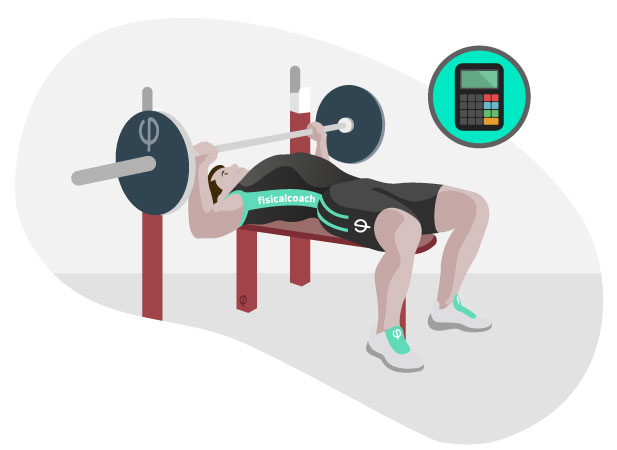
Indirect 1RM and RIR calculation
This test is an indirect way to measure the Maximum Repetition (1RM), i.e.: the maximum load a subject can support in a certain exercise. This test is used to obtain estimated values of 1RM, according to the formulas of the most relevant authors. Based on the Range of Perceived Exertion (RPE), also known as Börg’s scale, the subject’s number of Repetitions in Reserve (RIR), as well as the RIR to the 1RM ratio can be obtained.
RPE (Rate of Perceived Exertion) is a 1 to 10 range of subjective perception of effort. The greater the perceived effort, the higher on the scale the exercise will be rated.
RIR (Reps In Reserve) are the repetitions the subject still has in reserve, i.e.: the exercise repetitions he/she can perform until muscle collapse.
- Required material: Depends upon the exercises chosen to perform the test.
- Procedure: 1RM is evaluated using a formula with submaximal loads. Once a correct warm-up of the muscle group to be evaluated has been performed, a weight is chosen that allows the subject to perform only 4 to 10 repetitions (until muscle failure) and then the values (number of repetitions and weight lifted) are entered to obtain the results from the formulas according to the author. The most frequently used exercises for calculating indirect 1RM are the squat, deadlift and flat bench press.
- Assessment: Measured in kilograms (kg) or pounds (lbs) and the subject has only one attempt.
- Remarks: 1RM and RIR are very common terms in strength training. Once all these data have been obtained, the optimal workload for a certain subject can be determined.
Take this test and 139 more in our App